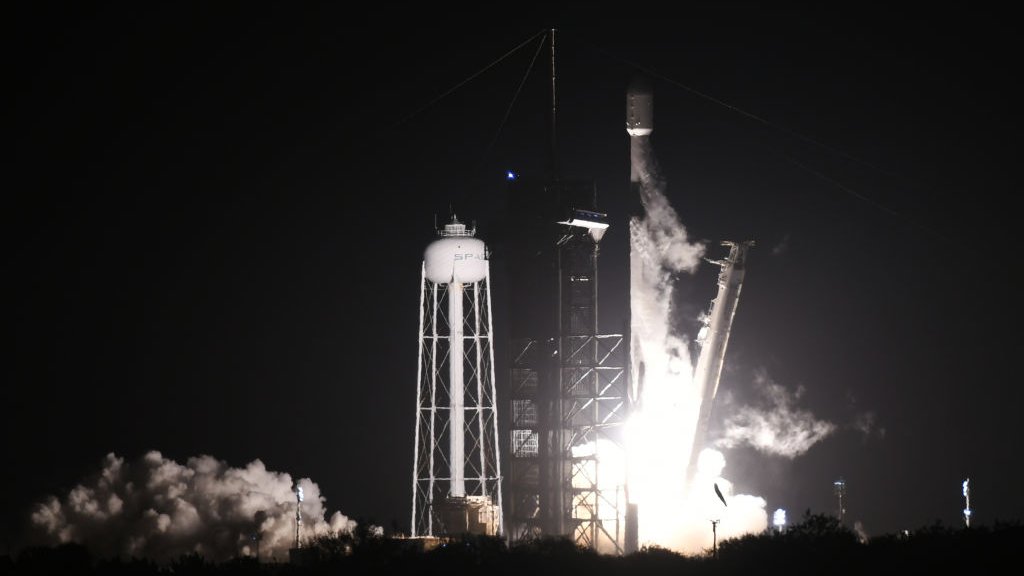Intuitive Machines: US spacecraft blasts off to Moon's south pole
A privately-owned spacecraft headed for the Moon has blasted off from Cape Canaveral, Florida.

If the spacecraft Odysseus's mission is successful, its owner Intuitive Machines will make history as the first private company to land on the Moon.
All previous landings have been carried out by national space agencies.
The robotic craft will attempt to land on the lunar surface's south pole, where scientists hope there could be a source of water.
It is the second commercial mission to be funded by the US space agency Nasa, as it seeks to encourage private missions to the Moon as a way to expand its reach in space.
The craft launched at 01:05 EST (06:05GMT) on top of a Falcon 9 rocket made by Elon Musk's SpaceX company.
Minutes later, the first stage of the rocket was released as planned and returned to Earth.
It was the third attempt, after bad weather prevented a launch in January and another was called off on Wednesday due to irregular methane temperatures.
There is still a long way to go before the mission can be called a success.
"We have to be humble about it," a representative for Intuitive Machines said on Thursday minutes before the launch.
"We looked at every mission that's gone to the Moon to learn from those mistakes," he added.
US company Intuitive Machines has developed the moon lander known as Nova-C
The lander uses a combination of liquid methane and oxygen for fuel, which had to be loaded into the craft before lift-off.
It is carrying a range of scientific instruments for Nasa, which is paying Intuitive Machines $118m (£93m). One tool will measure how the landing disturbs and sends up plumes of moon dust.
Another is a laser retroreflector array which will bounce back laser beams fired from Earth.
And a camera will be thrown off the craft before landing to take pictures of the machine as it touches down on the Moon.
It is also carrying commercial payloads, including 125 tiny sculptures made by US artist Jeff Koons. He hopes they will be the first artworks to make it to the lunar surface.
The lander is about the size of an old British phone box, according to Intuitive Machines. It is a hexagonal cylinder with six legs for landing.
Its journey to the Moon should take about a week. It aims to land about 186 miles from the south pole on the Moon's near side.
It would be the first time an American spacecraft has landed in that area, which is of interest to scientists because it could be home to frozen water.
Intuitive Machines hopes to send another spacecraft in March that would drill to find underground ice.
This is the second mission funded by Nasa's initiative to encourage private missions to space. The first was Astrobotic's Peregrine Lander which failed after a fuel leak in January.
"We're trying to create a marketplace in a place where it didn't exist," Nasa official Joel Kearns said on Tuesday. "But to do that, we have to do it in a cost-conscious manner."
-bbc







